Traditional solar street lighting system come with high electricity costs, complex wiring, and frequent maintenance. That’s why, world is now widely shifting towards eco-friendly and smart all-in-one solar street lighting system.
But with so many options available in the market varying in features and performance, several urban planners, municipal authorities, and real estate developers like you often ask “how to choose right all-in-one solar street light.” That’s exactly what this guide discusses.
What Is an All-in-One Solar Street Light?
An All-In-One solar street light is a compact lighting system where everything, like solar panel, LED light, rechargeable battery, and controller, is integrated within one unit.
Compared to traditional solar street lights, where each component is installed separately and connected via wires, all-in-one street lights are easier to install.
These lights collect solar energy during the day. And use the stored energy to power the LEDs at night. They are most commonly installed in urban streets, parking lots, gardens, campuses and anywhere where power outages occur frequently.
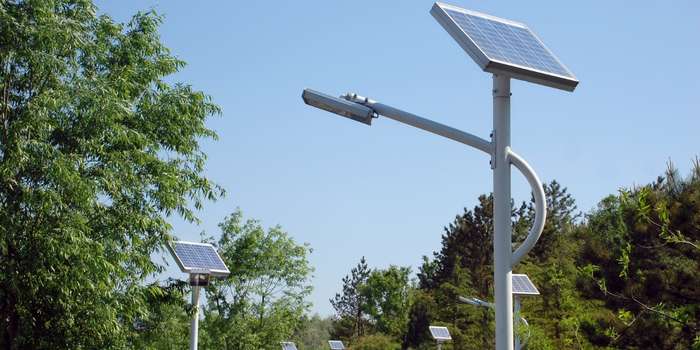
What Are All-in-One Solar Street Lights Made Up Of?
All-in-One solar street lights system is made up of several components, all equipped within one unit. Such as LED Chip, housing, controller, solar panel and post. Each component has a specific role to ensure the light works efficiently. Let’s now discuss what each component do:
-
LED Chip
This is the main light source. The LED chip basically emits bright, energy-efficient light that it powers using the battery and solar panels to operate during both day and nighttime.
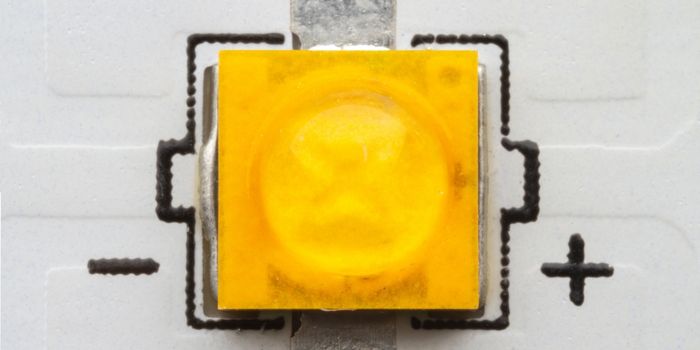
-
Housing
The housing is the outer body of the light. The body that holds and protects all the internal components (solar panel, battery, LED, and controller) inside.
The housing is usually made up of weatherproof and rust-resistant materials. So that the housing stay durable and light system keep operating in all weather conditions.
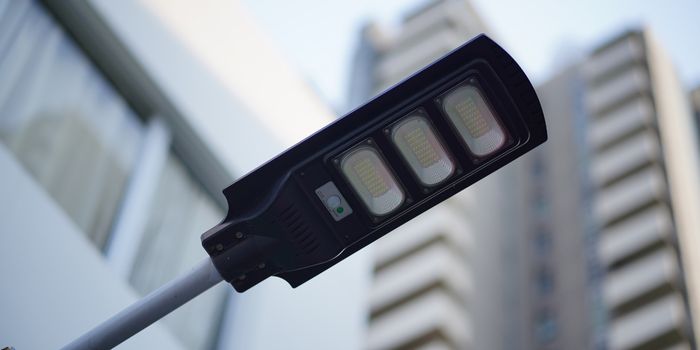
-
Controller
The controller actually manages how power flows between the solar panel, battery, and LED light. It also controls that the battery doesn’t over or under charge.
During the day, controller use solar panel to charge the battery. At night, it sends power from the battery to the LED chip. Apart from that, controller also manage automatic on/off settings, if the motion detection sensor is equipped.
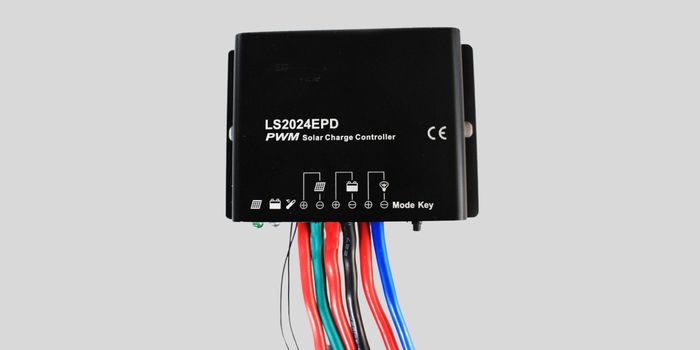
-
Solar Panel
The solar panel is generally mounted exact on top of the unit. During the day, the solar panel gets sunlight and converts it into electricity. This energy is further sent to the battery through the controller.
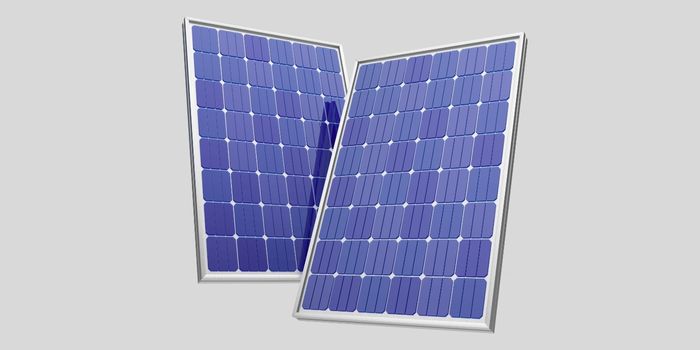
-
Post
The post (often known as pole) is a vertical stand that mount and supports the entire All-in-One unit. This post is often adjusted to a suitable height so that the lights can easily illuminate a wide area.
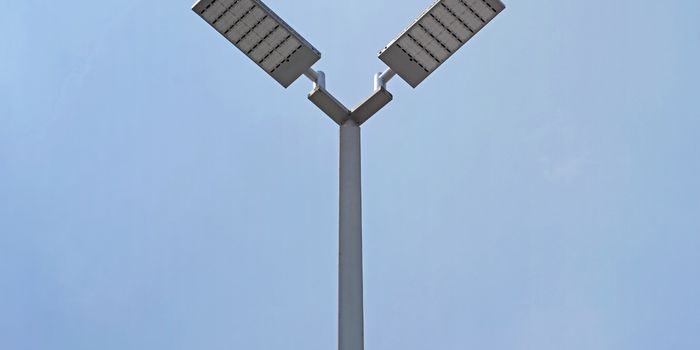
What Are Types of All-in-One Solar Street Light?
All-in-One solar street lights come in different types based on their structure design, functionality, application needs, and even features. However, in this section, we’ll specifically discuss all-in-one solar street light types based on features:
-
Motion Sensor-Based Lights
These lights basically are equipped with motion sensor along with other components. The sensor actually adjusts brightness based on movements. Whenever the sensor detect anyone in proximity, the sensor conveys controller to bright the lights. And when no one is around, lights stay dim.
-
Timer-Based Lights
These lights operate on your pre-set schedules on the controller. You can set certain time when the lights should turn on and off, regardless of sunlight or motion. You can install these lights in commercial zones like parking lots or commercial streets.
-
Dusk-to-Dawn Lights
Actually, these lights are equipped with light sensors. The sensor detect the change in ambient light and send the signal to controller to turn off (at sunrise)/ on (at sunset) lights. You can install these lights in streets, campuses, and public walkways for consistent lighting.
-
Hybrid Solar Street Lights
These lights basically operate using both solar energy and electricity. That’s why these lights are best to install in areas where sunlight is often unreliable or the weather changes often. So, on cloudy days or during long rainy seasons, they automatically switch to electricity. Otherwise, they operate over solar panels.
-
All-in-One with CCTV Camera
These lights are basically equipped with built-in CCTV cameras. You can install them anywhere where remote monitoring is needed. Like parking areas, gates, streets, and public spaces.
What Factors Should You Consider When Choosing an All-in-One Solar Street Light?
To select the right All-in-One street light equipment, you should consider several factors. Mainly, based on your project’s location, pedestrian or vehicular traffic, and usage patterns. Let’s discuss in detail that what factors you should consider:
-
LED Lighting Performance
The main job of all-in-one solar street light is to provide enough lighting in certain area. And that’s only possible if you choose LEDs with the right lumen output (which simply means brightness).
However, the lumen selection may vary based on where the light will be used. For high-traffic streets, highways, and public parks, you should choose the brightest lights. Typically, lights between 3000–12000 lumen output. In contrast, for residential lanes, gardens, or parking lots, lights within 1500–3000 lumens range are recommended.
-
Solar Panel Efficiency
Another critical factor to consider is solar panel efficiency as this is going to convert solar energy into electricity. In general, the higher the panel efficiency, the faster it charges the battery and lights operates well. That’s why, while choosing, you must consider the panel efficiency based on their expected application.
Suppose, if you’ll install lights in areas with limited sunlight or frequent rain (like coastal towns), we suggest you choose a monocrystalline panel with 20%+ efficiency. Whereas, for open and sunny regions, you can opt for standard polycrystalline panels.
NOTE: The solar panel angle placements matter too in how faster the battery charges. So, when installing, make sure to tilt angle so that there’s no shading during peak daylight hours.
-
Battery Type & Capacity
Generally, three types of batteries are used for all-in-one solar street lighting systems. Either lead-acid battery, liFePO4 battery, or lithium battery. However, among all of them, lithium-ion or LiFePO4 batteries perform well and also last longer compare to lead-acid ones.
Therefore, we highly suggest you do not consider price factor, instead consider the battery lifetime and operating capacity, before making selection. Typically, lithium batteries last about 5–8 years, LiFePO4 batteries lasts 8+ years, and Lead-acid lasts about two years.
-
Working Time & Light Sensor (Photocell)
Light sensor actually help the light turn on and off automatically. Apart from that, working time, means lights operating time also plays the vital role. That’s why you should consider all-in-one solar street lights with good working time.
For public walkways, school zones, and campuses, you should choose lights with 12–14 hours working time. However, for low-traffic areas, you can go for less working time or automatic light dimming system. Some advanced lights also come with timer options.
-
Weather Resistance & Durability (Waterproof Rating, Aging)
Since the lighting system are installed outdoor, so the lights and even outer casing must withstand harsh weather and UV conditions. We suggest you look for a minimum IP65 waterproof rating and anti-corrosion housing. If you are choosing for a region with heavy rain, dust, or coastal salt air then go for IP66 or IP67-rated lights.
-
Installation & Maintenance
One big pro of All-in-One solar street lights is their simple and hassle-free installation. However, you’ll typically find two mounting options: pole-mounted or wall-mounted. So make sure you also consider the right installation type based on your location.
For large-scale city projects, we suggest you choose lights that come with universal mounting brackets and pre-wired connections to save labor costs. You should also consider whether the pole is included or needs to be sourced separately as this directly affects both your budget and planning.
Tip: Tip: When planning for different zones whether in a city or residential site, don’t use a one-size-fits-all solution. Instead, make your selection based on application zone. That way, you’ll ensure both cost-efficiency and optimal lighting coverage.
Conclusion
Choosing the right all-in-one solar street light system can be time taking, and even cost you money if you unknowingly end up with the wrong solution. At JACKWIN, we understand the importance of understanding each project requirements and environmental conditions before making selection.
That’s why, by considering all the factors and keeping details we explained in this guide, you can choose the right All-in-One solar street light tailored to your needs. Taking enough time to evaluate the key factors upfront can save you both costs and after maintenance hassle.


-80x69.png)

